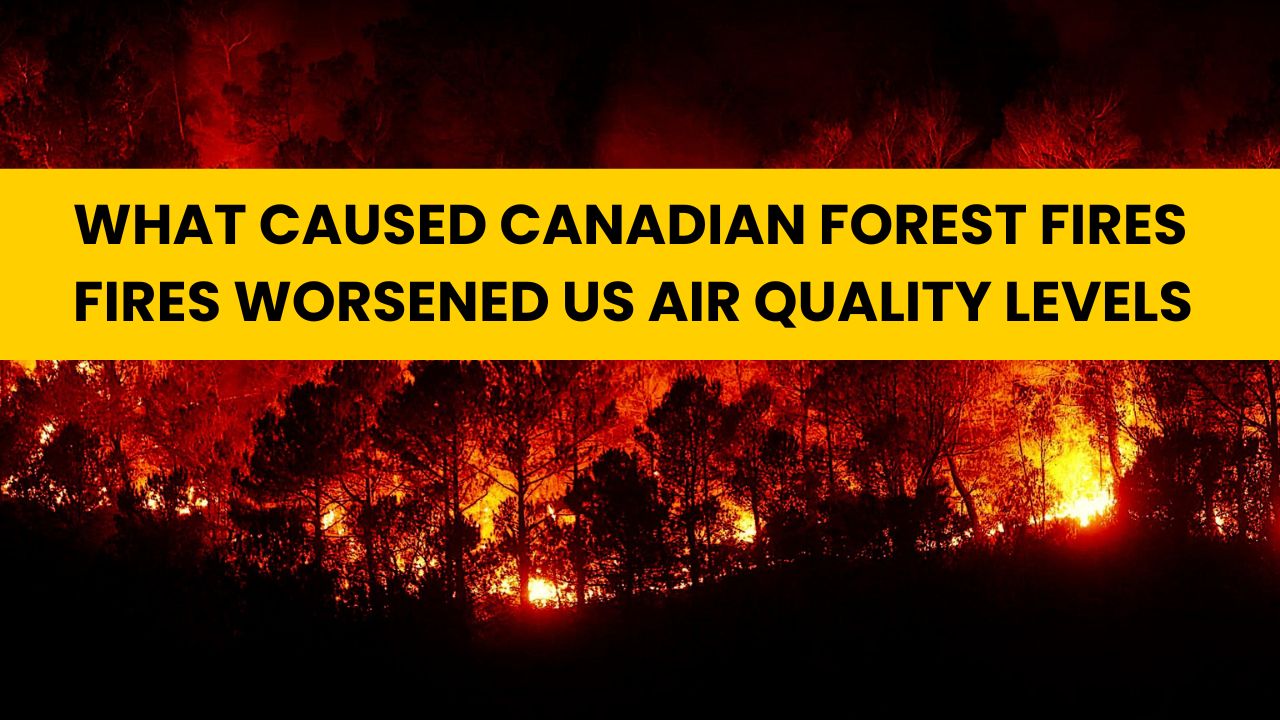What Caused Canadian Forest Fires: Fires Worsened US Air Quality Levels
Introduction
Forest fires have been a recurring natural phenomenon, with various factors contributing to their occurrence. In recent years, the Canadian wilderness has experienced an increase in forest fires, leading to widespread environmental damage and a significant impact on air quality. The repercussions of these fires have extended beyond Canada’s borders, affecting neighboring regions, including the United States. This article aims to explore the causes behind Canadian forest fires and the subsequent worsening of air quality levels in the US.
Causes of Canadian Forest Fires
1. Climate Change
One of the primary factors contributing to the increased frequency and severity of Canadian forest fires is climate change. Rising temperatures, prolonged droughts, and changing precipitation patterns have created favorable conditions for wildfires to ignite and spread rapidly. As temperatures continue to rise, the risk of forest fires in Canada and other affected regions intensifies.
2. Natural Factors
Aside from climate change, natural factors play a significant role in the occurrence of forest fires. Lightning strikes, for example, can ignite fires in remote areas that are difficult to detect and control. Dry thunderstorms, characterized by lightning without significant rainfall, pose a particular risk, as they can easily spark wildfires in areas with dry vegetation.
3. Human Activity
Human activity, both intentional and unintentional, contributes to forest fires in Canada. Accidental fires caused by campfires left unattended, discarded cigarettes, or sparks from machinery can quickly escalate into large-scale wildfires. Additionally, irresponsible behavior such as arson or the improper use of fireworks can lead to devastating consequences, including the destruction of vast forested areas.
Impact on US Air Quality
1. Transboundary Smoke Transport
The intensity and magnitude of Canadian forest fires can result in the transport of smoke and pollutants across international borders, impacting air quality in neighboring regions such as the United States. The vast plumes of smoke, containing fine particulate matter (PM2.5), carbon monoxide (CO), and other pollutants, can travel for thousands of miles, carried by wind patterns.
2. Health Risks for US Residents
The decline in air quality caused by Canadian forest fires poses significant health risks to residents of the United States. Exposure to high levels of PM2.5 and other harmful pollutants in the smoke can lead to respiratory issues, aggravate existing respiratory conditions like asthma and bronchitis, and increase the risk of cardiovascular problems. Children, the elderly, and individuals with pre-existing health conditions are particularly vulnerable.
3. Economic and Environmental Consequences
The impact of worsened air quality due to Canadian forest fires extends beyond human health. The economic repercussions of reduced air quality can be substantial, affecting industries such as tourism, outdoor recreation, and agriculture. Additionally, the environmental damage caused by large-scale forest fires can result in the loss of biodiversity, destruction of wildlife habitats, and long-term ecosystem disruptions.
Mitigating the Impact
1. Collaborative Fire Management
Mitigating the impact of Canadian forest fires on US air quality requires collaborative fire management efforts between Canada and the United States. This includes sharing resources, expertise, and firefighting strategies to effectively combat wildfires. Collaborative initiatives can also focus on prevention measures, such as raising public awareness about fire safety, implementing stricter regulations, and enforcing penalties for irresponsible behavior.
2. Improved Early Detection and Monitoring
Enhancing early detection and monitoring systems is crucial for timely intervention and containment of forest fires. This involves the use of advanced technologies, such as satellite imagery, remote sensors, and predictive modeling, to identify potential fire hotspots and monitor fire behavior. The integration of real-time data and communication networks enables swift response and evacuation protocols to protect both human lives and the environment.
3. Climate Change Mitigation
Addressing the underlying cause of increased forest fires in Canada requires a comprehensive approach to mitigate climate change. This involves reducing greenhouse gas emissions, transitioning to renewable energy sources, promoting sustainable land management practices, and supporting international agreements aimed at curbing global warming. By tackling climate change, we can help reduce the frequency and severity of forest fires, ultimately safeguarding air quality.
Conclusion
The exacerbation of US air quality levels due to Canadian forest fires highlights the interconnectedness of environmental challenges across borders. To mitigate the impact, a multi-faceted approach involving collaborative fire management, improved early detection and monitoring systems, and climate change mitigation is crucial. By working together and addressing the underlying causes, we can strive towards protecting air quality, preserving ecosystems, and ensuring the well-being of communities in both Canada and the United States.
